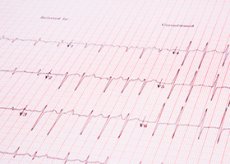Medical expert of the article
New publications
Cardiotocography (CTG) in pregnancy
Last reviewed: 03.07.2025

All iLive content is medically reviewed or fact checked to ensure as much factual accuracy as possible.
We have strict sourcing guidelines and only link to reputable media sites, academic research institutions and, whenever possible, medically peer reviewed studies. Note that the numbers in parentheses ([1], [2], etc.) are clickable links to these studies.
If you feel that any of our content is inaccurate, out-of-date, or otherwise questionable, please select it and press Ctrl + Enter.

One of the important examinations that an expectant mother faces during pregnancy is CTG.
The main questions related to this diagnostic procedure, which usually arise in pregnant women, were answered by an obstetrician-gynecologist, ultrasound diagnostics doctor of the highest category, Yuriy Tsezarevich Yavorsky, a doctor with 32 years of experience.
CTG (Cardiotocography) is a continuous synchronous recording of the fetal heart rate and uterine tone. Heartbeats are recorded using an ultrasound sensor, uterine tone is recorded using a pressure sensor.
This diagnostic method is used to assess the condition of the fetus during pregnancy and during childbirth.
Is it necessary to do CTG during pregnancy?
If the doctor recommends cardiotocography, of course, it is better to follow his advice. Thus, in case of any pathology, it can be detected at an early stage and treatment can be started in time.
When is CTG done during pregnancy?
CTG screening is recommended after 32 weeks of pregnancy.
Cardiotocography at periods from 32 to 40 weeks is practically no different in its indicators. During labor, this diagnostics additionally shows the strength of contractions and helps to diagnose weakness of labor activity, excessive labor activity. At periods from 32-38 weeks, cardiotocography can be used to diagnose premature labor.
What does CTG show during pregnancy?
Cardiotocography helps:
- assess the condition of the fetus;
- identify signs of fetal distress;
- determine the tone of the uterus and the presence of contractions;
- By conducting tests, it is possible to determine the compensatory capabilities of blood flow.
Indications for CTG during pregnancy
The main purpose of cardiotocography is the diagnosis of intrauterine fetal distress.
During childbirth, cardiotocography is performed in the following cases:
- when the expectant mother has general diseases;
- when pain relief is provided during labor;
- if labor is induced;
- if abnormalities were detected in the fetus during pregnancy.
How to prepare for CTG during pregnancy?
No special preparation is required to conduct this study.
Before the CTG examination, you need to calm down and relax first. If you came to the hospital for cardiotocography, you can sit for a while in front of the CTG room so that your pulse returns to normal. CTG is usually performed by obstetricians-gynecologists or functional diagnostics doctors.
How long does CTG last during pregnancy?
The duration of the study is at least 30 minutes.
How is CTG performed during pregnancy?
Informative examinations are prescribed after 32 weeks of pregnancy. CTG is performed in the position of the pregnant woman's body in which both the woman and the fetus feel comfortable. The heart rate is normally from 110 to 160 beats per minute at rest, 130-180 beats per minute during fetal movements. Normally, the frequency varies from 5 to 25 contractions per minute, there should be no slowing down of the frequency (decelerations) normally. Sometimes only very short and shallow. If they are registered, then the fetus suffers and inpatient additional examination and treatment are required.
Is CTG harmful during pregnancy?
The research method is safe, since the power of the ultrasonic sensor is weak, and the pressure sensor does not produce any radiation at all.
Harm of CTG during pregnancy
Cardiotocography does not have any damaging effect on either the mother’s body or the health of the future baby.
Decoding CTG during pregnancy
The decoding of CTG is carried out by functional diagnostics doctors and gynecological obstetricians.
Cardiotocography is deciphered using a 10-point system.
- 9-12 points - the condition of the fetus is normal.
- 6-8 points - fetal distress, repeat examination required.
- 5 points or less - severe distress. Urgent delivery is required.
Bad CTG during pregnancy
There are no bad CTGs. There are informative and uninformative CTGs. If the cardiotocography is uninformative, a repeat examination should be performed. If there are deviations, you should consult a doctor who will assess the situation.
How much does CTG cost during pregnancy?
In private clinics, the cost of the cardiotocography procedure depends on the level of the institution, the quality of the equipment and many other factors. The price range in Kyiv, for example, is from 100 to 300 UAH, sometimes higher. In budgetary institutions of the country, CTG is performed free of charge.


 [
[